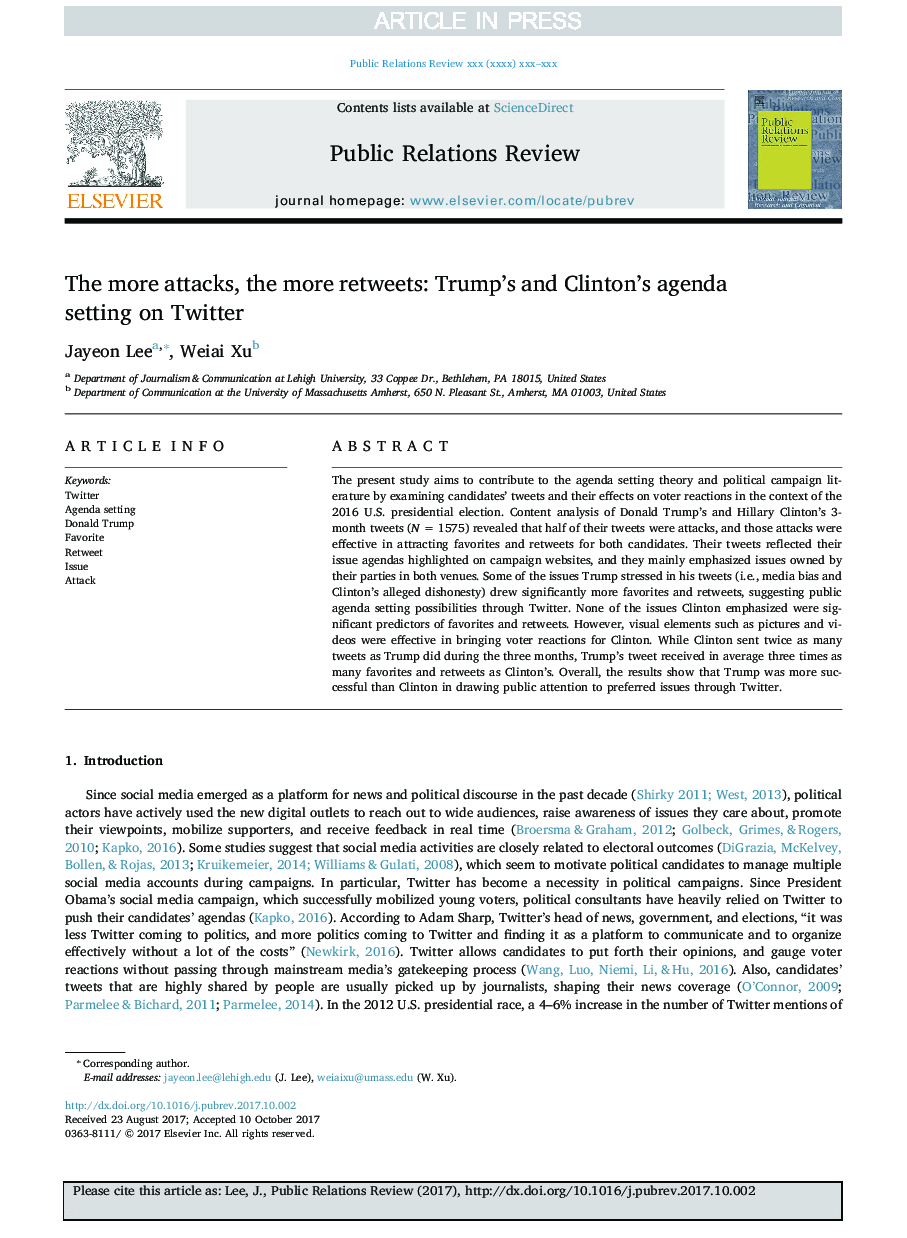| Article ID | Journal | Published Year | Pages | File Type |
|---|---|---|---|---|
| 6575816 | Public Relations Review | 2018 | 13 Pages |
Abstract
The present study aims to contribute to the agenda setting theory and political campaign literature by examining candidates' tweets and their effects on voter reactions in the context of the 2016 U.S. presidential election. Content analysis of Donald Trump's and Hillary Clinton's 3-month tweets (NÂ =Â 1575) revealed that half of their tweets were attacks, and those attacks were effective in attracting favorites and retweets for both candidates. Their tweets reflected their issue agendas highlighted on campaign websites, and they mainly emphasized issues owned by their parties in both venues. Some of the issues Trump stressed in his tweets (i.e., media bias and Clinton's alleged dishonesty) drew significantly more favorites and retweets, suggesting public agenda setting possibilities through Twitter. None of the issues Clinton emphasized were significant predictors of favorites and retweets. However, visual elements such as pictures and videos were effective in bringing voter reactions for Clinton. While Clinton sent twice as many tweets as Trump did during the three months, Trump's tweet received in average three times as many favorites and retweets as Clinton's. Overall, the results show that Trump was more successful than Clinton in drawing public attention to preferred issues through Twitter.
Related Topics
Social Sciences and Humanities
Business, Management and Accounting
Marketing
Authors
Jayeon Lee, Weiai Xu,
